Hello Bees and Blanchetters! Today is Christmas!
The long awaited special issue of W Magazine is here! The site released sneak peak of the new issue of the magazine, with four covers, nine, and I repeat, nine photoshoots featuring Cate, plus two shorts films, a video interview and a converation with Miuccia Prada. Our lovely lady is coming to be a guest editor after her first foray 18 years ago for Harper’s Bazaar Australia. Read everything below and enjoy!
Cate Blanchett, Interpreted: 9 Female Artists and Photographers Expose the Actress’s Power as a Muse in a Special Issue of W Magazine
At the Cannes Film Festival this year, 82 women, all of whom have starred in, directed, written, or otherwise worked on movies, including many that have been shown over the festival’s 72-year history, were celebrated together on the long red carpet that leads to the Grand Théâtre Lumière. It was a beautiful and profound statement that spoke directly to the #MeToo movement. Instead of commiserating about injustice, these women, from different backgrounds and countries, were proudly displaying their talent, range, and creativity. It was an active gesture of solidarity. “We need to remake the industry in a new and fresh way,” said Cate Blanchett, who was the head of the jury in Cannes and is also the guest editor of this issue of W. Our idea was to create something similar to that amazing female empowerment scene in Cannes: to show what female photographers, artists, directors, and stylists can create. This issue, spearheaded by the greatest actress of her generation (who, most recently, plays a complex witch in The House With a Clock in Its Walls, out on September 21), is an extraordinary ode to the female gaze. All of our contributors in these pages are women. For Blanchett, who was the muse for nine of these varied talents in this cover portfolio—including Alex Prager, who cast her in a murder mystery; Cass Bird, who captured Blanchett on the night of her Ocean’s 8 premiere, in Times Square; and Shirin Neshat, who envisioned her as a raven-haired chanteuse—the breadth of vision was thrilling. “I don’t like to generalize about gender,” Blanchett explained, “but, for me, the biggest question was: Why haven’t I worked with these remarkable women more?! Where have they been?” They are here. World: Take notice.
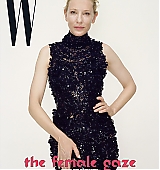



Some on set pictures, taken on June 7 in New York
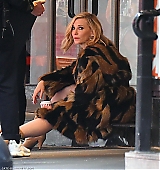
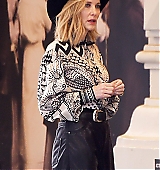

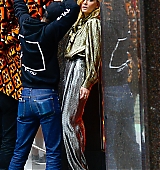
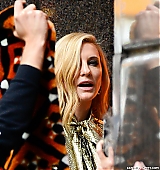
Cate Blanchett, In Her Own Words, On Guest Editing a Special Issue of W Magazine
“Such are the two ways of the Photograph. The choice is mine: to subject its spectacle to the civilized code of perfect illusions, or to confront in it the wakening of intractable reality.” —Roland BarthesEvery photograph presents us with this fork in the road, but if we keep going down the same old path, we only ever get the same old answer. This issue is the other path: all female collaborators, female photographers, female visions, creative acts, aspirations, and endeavors. And that’s just the tip of the iceberg.
I’m wary of mission statements, expressions of vision. I prefer opening gambits, perhaps. Starting points. Launching pads. Language is all-important, and the way one begins a conversation, whether it be with a director, the W team, or, indeed, the W readers, will influence the way the project and its outcomes unfold. I’d like to think this issue is one such opening gambit. A provocation to look at life through a different lens. We hope it’s a fresh, exciting, and inclusive one.
Insanely busy as all the photographers were, they perforated their schedules to be part of what felt like an exploration of possibilities: a mash-up, a riotous juxtaposition of wildly different creative perspectives. And whoa!…did we laugh. Running around New York City in the middle of the night with Cass Bird; frolicking through the daisies in the English countryside with Sharna Osborne; lip-synching with Shirin Neshat; typing—bunny style—with Sam Taylor-Johnson; et cetera, et cetera, et cetera. And then, being in conversation with the incomparable Miuccia Prada and brainstorming with the indefatigable, fearless, adventurous, and profoundly generous W team.
I hope the energy and va-va-voom that has gone into this issue leaps off the pages and into your hearts and minds. It certainly got my creative juices flowing…
With love,
When Miuccia Prada was immersing herself in the student politics of Milan at the end of the 1960s, fashion was not considered a suitable career for an educated young Italian woman of means. And when Cate Blanchett was growing up in suburban Melbourne amid the struggles for equal pay and paid maternity leave of 1970s Australia, acting seemed, at best, a navel-gazing indulgence. So the paths that young Miuccia and Cate went on to take were perhaps the most radical ones available to them—by their second-wave feminist sisters’ estimation, at least. They each got married and followed their hearts’ desires, doing whatever gave them pleasure.
The strategy worked out well for both of them. Since Prada took over her parents’ leather goods company in the ’70s, which the designer still runs with Patrizio Bertelli, whom she married in 1987, she has turned it into a $11.4 billion enterprise, one comprising not only a hugely influential fashion label but also an increasingly important cultural institution: the Fondazione Prada, whose Rem Koolhaas–designed space in Milan opened in 2015. Blanchett was already an accomplished stage actor when she met the director Andrew Upton in 1996, and together, as the husband-and-wife artistic directors of Sydney Theatre Company, they went on to run an ambitious stage program for five years, as Blanchett’s movie career went interstellar. Now a two-time Oscar winner and the recipient of a staggering 149 other awards, she is one of the actors most respected by other actors—an ambition, she says, she held from Day One.
Success may have set Prada, 69, and Blanchett, 49, apart from their respective peers, but what has made them an inspiration for other women is how their work communicates beyond appearances—Prada’s by inspiring desire in her consumers, while reassuring them they have made an intelligent, discerning choice; Blanchett’s through roles that provoke as well as seduce her audience. For this portfolio, the pair reversed this scenario, highlighting women whose work and lives inspire them, and who are pictured below.Penny Martin: Are you two old friends?
Miuccia Prada: We met at the Guggenheim in 2007. The artist Francesco Vezzoli put on a play, Right You Are (If You Think You Are), and Cate was in it.
Cate Blanchett: Yes, by Pirandello. It was something! We never rehearsed it. Everyone assembled in the morning to read the play once, and then we took over the museum. It was so risky. Elaine Stritch was there, which was the highlight of my life.
Martin: Mrs. Prada, is it true you studied mime?
Prada: Yes. There was this theater in Milan called the Piccolo Teatro, where all the clever people were in the ’60s, and I wanted to be with them. I was studying political science at the time, but mime sounded more interesting to me. Afterward, I hated it, but I studied for five years, and I think it taught me discipline. You know Decroux, the father of mime? One day, he limited us to only moving our fingers—the body control was extreme.
Blanchett: When you’re studying something wordy like politics, the minimalism of a simple gesture can be powerful.
Prada: In those days, I was heavily into politics and rebellion. I never set foot in the university, except for exams. I was too involved in politics.
Blanchett: On campus?
Prada: No, in the Union of Women. I was active for years but hated speaking in public, so I gradually began working at my parents’ company, which was the worst thing you could ever do in the ’60s and ’70s, as a feminist—to work in the fashion industry. I was ashamed, but I liked it so much.
Martin: Why ashamed? Because clothing was perceived as feminine and thus lightweight?
Prada: Yes, the idea that fashion is stupid.
Blanchett: And I don’t think much has changed. I still get battered if I express an interest in costume or fashion.
Prada: It’s the toughest industry to work in. But you know what has made me appreciate my job? The super-clever people around me—directors, artists, and intellectuals who appreciate the ideas. I have always believed in collaborations and made sure I worked with and supported female artists. With the Fondazione, in addition to Laurie Anderson and Goshka Macuga, we have done amazing projects with Mariko Mori, Louise Bourgeois, Nathalie Djurberg, and others. In cinema, we have worked with great female directors for the short films we commission for our “Miu Miu Women’s Tales” series, and recently even with cartoonists in our Prada collection. It’s because I’m a successful fashion designer that I’m able to realize the artwork. My job is being the anchor.Martin: Cate, your story reads less like one of rebellion than of destiny. Weren’t you acting, directing, and producing when you were still at school?
Blanchett: Yes, but it’s like I never chose acting. Even coming out of drama school, I said I would give it five years. Every time I’ve been pregnant, I’ve said I’m going back to finish my university degree—I studied fine arts and economics. You know, theater and cinema may be fundamental to the national cultural identity in the U.K. or Italy, but in Australia acting or writing is so utterly irrelevant to the fabric of society.
Prada: What is valued there?
Blanchett: Physical exercise—they like a triumph over the elements. That and when people achieve things overseas. They don’t appreciate it when it’s in their own backyard.
Martin: You spent five years as co–artistic director of Sydney Theatre Company with your husband, Andrew Upton. That’s something you and Miuccia share—you both brought your husbands into your working lives.
Blanchett: Well, my husband brought me into his world. You both push each other, for better or worse.
Prada: I probably wouldn’t have done this job had I not met my husband. Everything has happened between us, but we’re still together, after more than 40 years!
Martin: Most people would think working with one’s husband would end a marriage. What’s the secret?
Prada: I have no idea. It’s mysterious.
Blanchett: For me, it’s having a common goal, even if you’re running at it from completely different directions.
Martin: So if your national culture didn’t particularly champion cinema, Cate, were films something you grew up perceiving as foreign?
Blanchett: Yes, growing up with just a few TV channels in the ’70s and ’80s, what one consumed on a Saturday afternoon were B-grade American films. My taste is really eclectic as a result. Bette Davis, Gregory Peck…and Anna Magnani and Giulietta Masina, when I eventually saw them, whom I absolutely loved. On the small screen, I worshipped Lucille Ball.
Prada: I started when I was a really small kid. My father brought us to the cinema to see Westerns. Soon enough, I was going all the time: three movies a day! My education was Antonioni, Godard, Buñuel…Now I probably watch a film a night, in bed. Alice Rohrwacher’s new one, Happy as Lazzaro, is very good. Alice can suspend time. Watching her films, you’re always torn between the delicacy of her humanity and the roughness of reality.
Blanchett: To be honest, some of the most profoundly formative experiences I’ve had were with dance—when I first watched butoh, it blew my mind.
Prada: One of the best weeks of my life was in Venice, where Pina Bausch was performing every day—it was incredible.
Martin: Do you think the fact that it was a female-led company made it resonate with you?
Prada: The power was in seeing the body used in a different way. Do you ever suffer from the feminine position, being a woman, Cate? It’s possibly because I come from a privileged position, but I never felt inferior to a man.
Blanchett: Sometimes, in England, I have a double sense of inferiority—I’m female and I’m Australian, from the colonies. But I rarely think about my gender until it’s pointed out to me, generally in interviews. The adjectives that are applied to me—I’m “forceful” or I “take no prisoners,” all because I express an opinion that I was asked for.
Martin: Often, the subtle, practical things are the most insidious. I was struck by what the director Agnès Varda said during the talk she gave in Venice a few summers ago to accompany her film for Miu Miu’s “Women’s Tales.” She explained that even though she was an accepted figure of 1960s cinema in France, and married to Jacques Demy, she couldn’t get cameramen and sound guys to carry out her instructions on set. To the extent that she had to set up her own production company.
Blanchett: From a positive perspective, having to create your own context really tests your need to do a project. It might take longer, but finding your own way in creates work that’s specific to that structure; it’s quintessentially yours.
Prada: Agnès is such an incredible woman. Cléo From 5 to 7 impressed me enormously in my youth. Her work has been, and is still now, so experimental. A good example is her latest, Faces Places. It is quite remarkable that she still has the energy, the spirit, and the need for such a project.
Martin: I gather that since Alejandro Iñárritu’s virtual reality piece, Carne y Arena, was shown at the Fondazione Prada last year, you plan to experiment more with VR and other alternative forms of cinema. Have you any dreams of directing?
Prada: No! But a fashion show is kind of a movie.
Martin: In which you are the director. How do you choose the directors for your “Women’s Tales” films, several of whom were photographed for this story—Ava DuVernay, Agnès Varda, Alice Rohrwacher—as well as people like Miranda July, Crystal Moselle, and Naomi Kawase?
Prada: I didn’t want the “Women’s Tales” to be purely commercial. Ava, for example, is an inspiration because she’s never afraid to stand up for what she believes in.
Martin: You’ve always been quite clear about keeping your art and fashion projects separate from one another.
Prada: In the beginning, I kept them separate because I wanted the respect of the art world. I’ll collaborate with anyone, but I draw the line at decorating a bag with someone else’s artwork.
Martin: What about the other way around? You made costumes for Baz Luhrmann’s The Great Gatsby, costumes for New York’s Metropolitan Opera.
Prada: Well, it’s rare that I’m asked, and, actually, costume design is a completely different job from fashion. There’s so much “You can’t do it like this.”
Martin: Cate, one of the most memorable costume moments has to be from the film Elizabeth, when a character is struggling to get out of a poisoned corset before it kills her. In fact, a good number of the awards for which you’ve been nominated are for playing real people: Bob Dylan, Katharine Hepburn, Veronica Guerin, as well as Elizabeth I.
Blanchett: Often, the audience thinks it takes more homework to play a real person, and, as they like to see how hard people have worked, they think it makes you more worthy of an award. I’m not interested in “the work” in terms of what it costs me personally. Art is not instructional, I think: It’s provocative. As such, my job is to be inconsistent, impolite, and disruptive.
Prada: Meanwhile, the media wants an explanation, a definition that will stay the same forever. At this moment, everything is being simplified—politics, life. But life is complicated; I am complicated, and my interests are varied—from the super cheap to the elevated. That’s why artists envy my job, or yours, because we do things quickly, and afterward we change.
Martin: Still, there are some underlying values that never change. They’re what make other women continue to look to you as role models.
Blanchett: There is a bottom line, yes. I have my own set of political beliefs, and hopefully a moral backbone. But when I was at university, thinking about what I wanted to do, I decided the only two things I wanted were to travel and to have the respect of my peers—whether that meant being an actor, an architect, or a gallerist.
Prada: As I get older, I do like to teach young girls about life, and I do have expectations of myself: What can I do that is clever, that is interesting, new, and fun? But other people’s expectations, I care less about. Your main obligation is to yourself. We are our own best competitors.
 Welcome to Cate Blanchett Fan, your prime resource for all things Cate Blanchett. Here you'll find all the latest news, pictures and information. You may know the Academy Award Winner from movies such as Elizabeth, Blue Jasmine, Carol, The Aviator, Lord of The Rings, Thor: Ragnarok, among many others. We hope you enjoy your stay and have fun!
Welcome to Cate Blanchett Fan, your prime resource for all things Cate Blanchett. Here you'll find all the latest news, pictures and information. You may know the Academy Award Winner from movies such as Elizabeth, Blue Jasmine, Carol, The Aviator, Lord of The Rings, Thor: Ragnarok, among many others. We hope you enjoy your stay and have fun! 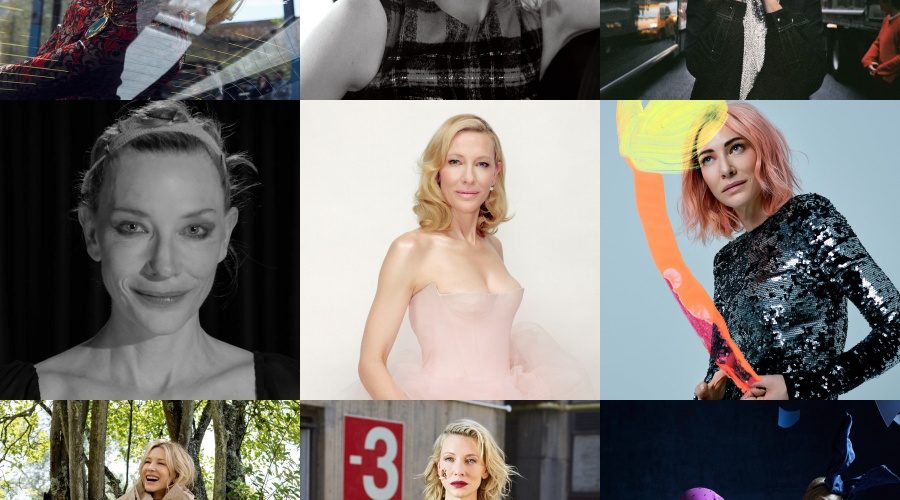
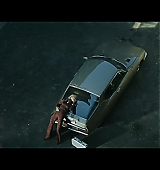


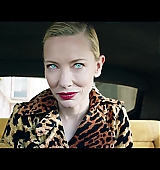

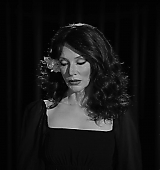
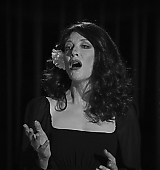
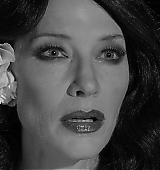
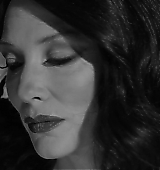
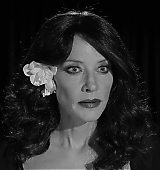
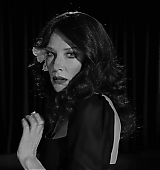
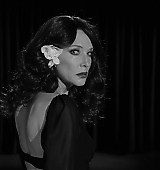
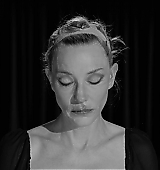
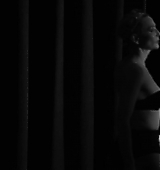

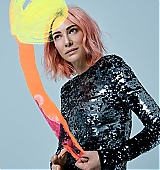



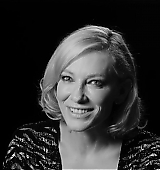


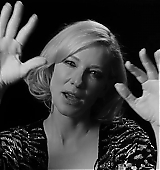
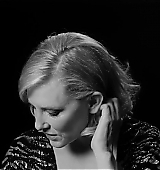




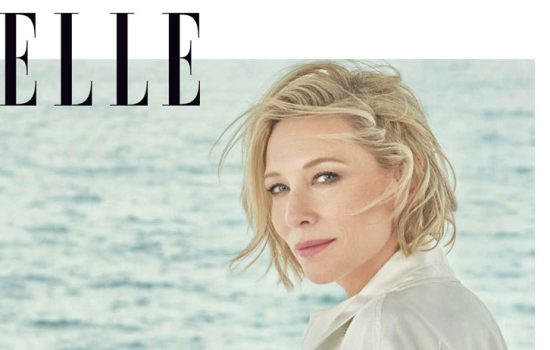
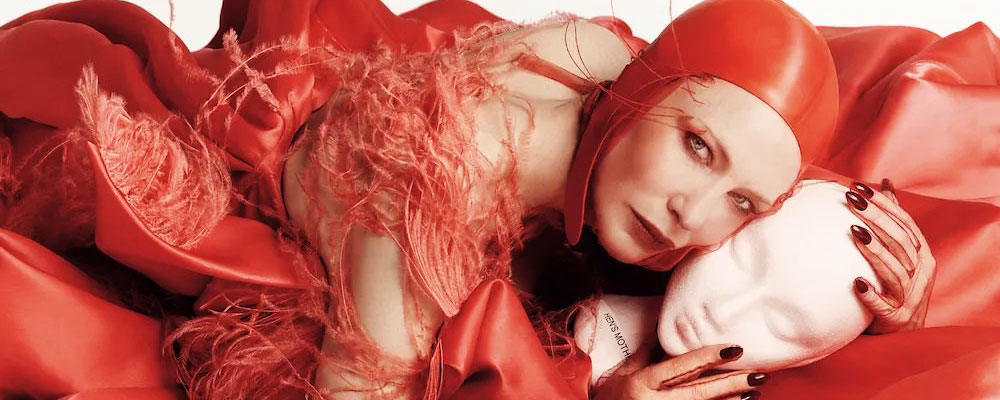
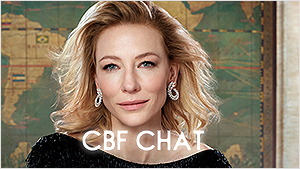
 A Manual for Cleaning Women (202?)
A Manual for Cleaning Women (202?) The Seagull (2025)
The Seagull (2025)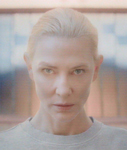 Bozo Over Roses (2025)
Bozo Over Roses (2025) Black Bag (2025)
Black Bag (2025) 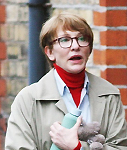 Father Mother Brother Sister (2025)
Father Mother Brother Sister (2025) 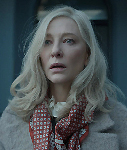 Disclaimer (2024)
Disclaimer (2024) 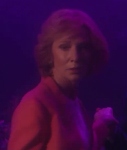 Rumours (2024)
Rumours (2024) 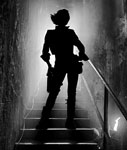 Borderlands (2024)
Borderlands (2024) 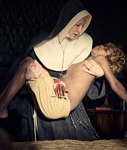 The New Boy (2023)
The New Boy (2023) 











